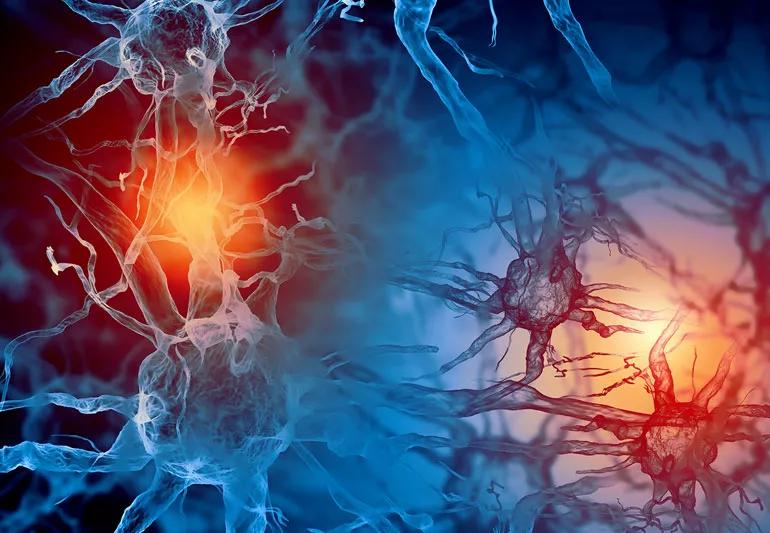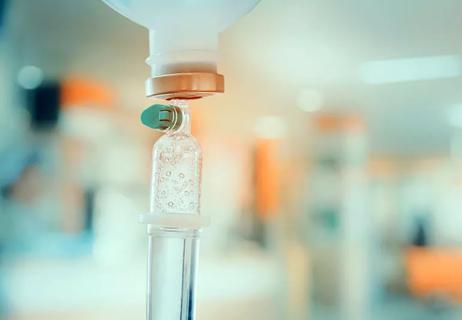In a major study, 93% of people saw a reprieve in pain

Chronic regional pain syndrome (CRPS) takes a toll: Your nerve cells become hypersensitized to the point where everyday stimulation — like a draft of air or touch — causes an out-of-whack pain response.
Advertisement
Cleveland Clinic is a non-profit academic medical center. Advertising on our site helps support our mission. We do not endorse non-Cleveland Clinic products or services. Policy
“Our bodies use acute pain as a warning system,” says pain management doctor Nagy Mekhail, MD, PhD. “If you sprain your ankle, the pain prevents you from putting your foot down and causing further injury. If you have chest pain while walking up two flights of stairs, it sounds an alarm to seek medical advice.”
But with chronic pain conditions like CRPS, pain loses its protective function and becomes a disease by itself. Thankfully, new treatments are being developed every day — like ketamine infusions and dorsal root ganglion stimulation (DRGS). Dr. Mekhail discusses DRGS, including who is most likely to benefit:
A: Each segment of your spinal cord manages sensations for a specific area of the body. It’s like train lines heading out for different parts of the city. And the dorsal root ganglion (DRG) is the transportation hub: Every stimulus flows through the DRG, the nerve center of the spinal cord, on the way to the brain where it gets processed.
But the DRG is not just a sensation-relay station: It can filter pain stimuli to make them more or less intense.
A: The goal of DRGS is to make the nerve cells less sensitive. We use electric stimulation over the dorsal root ganglion to create an electric field, which slows the pain signals traveling from the limbs to the spinal cord then onto the brain. The electric field reprograms the nerve cells to decrease the super sensitivity that goes along with CRPS. This process normalizes the patient’s pain sensations.
Advertisement
A: The procedure takes 60-90 minutes. The team will:
When you move your foot or hand, the leads send minor electrical impulses to the DRG to block the pain signals from reaching the brain.
A: It seems with CRPS there is a structural change in the DRG cells. The result is pain that no longer needs a stimulus to start. The pain is constant for no rhyme or reason.
A: The initial study compared DRGS to spinal cord stimulation (also called SCS, which is similar, but doesn’t target the dorsal root ganglion). The results were impressive:
A: DRGS is an invasive procedure — we implant an electrical stimulator into the body — so we prefer to try less invasive methods first, such as:
If the pain is chronic and uncontrollable with other treatments, it’s worthwhile to consider DRGS because it works so well.
A: The risks are the same as with any procedure: a chance of bleeding or infection at the surgical site. But those are rare occurrences. There’s also a small chance that the wire that generates the electrical field will move and need to be repositioned.
The only other consideration is that the stimulator runs off a battery that gets implanted into the buttocks. The battery lasts five or six years, but eventually, it will need to be replaced. Fortunately, it’s a pretty quick procedure (15 to 20 minutes).
A: In my practice, I’ve seen DRG stimulation help with other types of pain, including:
Advertisement
Learn more about our editorial process.
Advertisement

They put the kibosh on overzealous nerves

This evidence-based practice is used to help manage pain, relieve menopause symptoms and boost your spirits

The causes of fibromyalgia are complex, but an overactive immune system might be part of it

These creams that you apply to your skin can actually help reduce localized pain, swelling and inflammation

Medical massage is tailored to your health needs to help you recover

Low-level, dull soreness that goes away with rest or physical activity is normal — but if it lingers or worsens, see a healthcare provider

A disease can be diagnosed, while an illness is something you feel or experience

When your lower back hurts, stretching and staying active can be key to finding relief

If you’re feeling short of breath, sleep can be tough — propping yourself up or sleeping on your side may help

If you fear the unknown or find yourself needing reassurance often, you may identify with this attachment style

If you’re looking to boost your gut health, it’s better to get fiber from whole foods